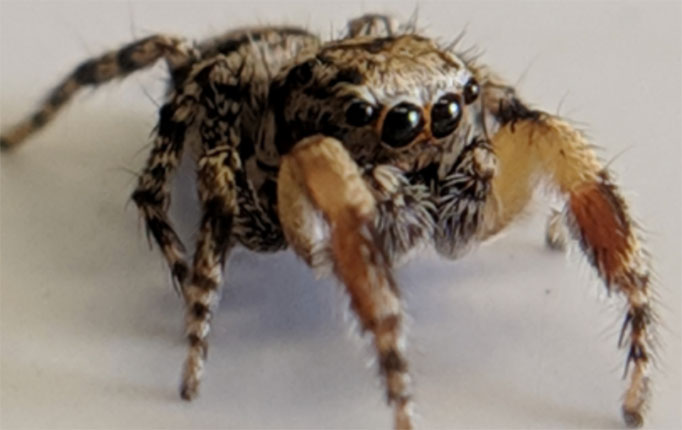
Some Habronattus spiders (pictured) exhibit surprising heat tolerance. Photo by Erin Brandt.
A group of Berkeley researchers, led by alumna Erin Brandt, recently published some surprising discoveries on the heat tolerance of desert jumping spiders. In the study, which was conducted with associate professor Damian Elias and released in the Journal of Insect Physiology, the group compares the thermal tolerance of six Habronattus jumping spider species, a group commonly found along an elevational gradient in Arizona deserts. All of these species prove remarkably heat-tolerant, with their tolerance surpassing 53°C—a temperature that exceeds the annual maximum in their environment by more than 20 degrees.
The study has implications for changing climates. Since the temperature of the spiders' habitat is predicted to increase by roughly 3 °C in the next 50 years, these Habronattus should have a comfortable buffer. However, even though the spiders are expected to survive such heat increases, previous work by Brandt and others has suggested that increasing temperatures can impact sexual behavior. The finding raises the possibility that behavioral changes, rather than the ability to withstand heat, may be more important for the future of these species as the climate warms.
READ MORE:
